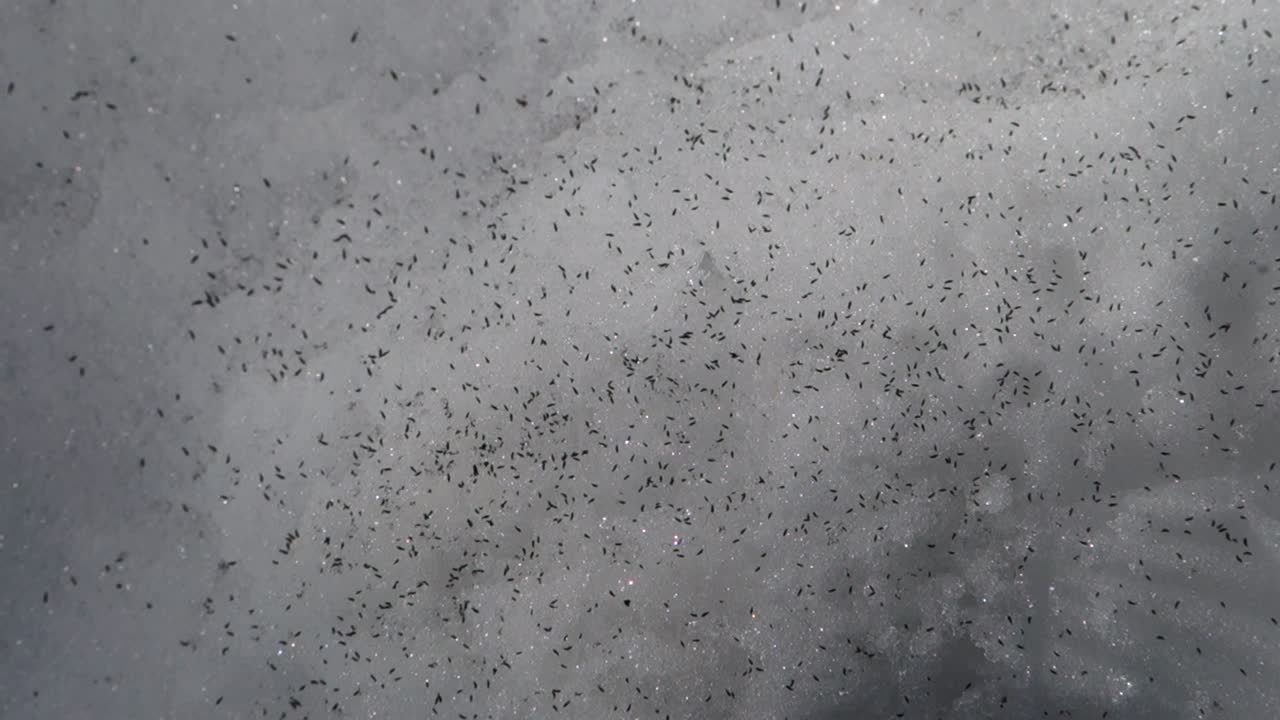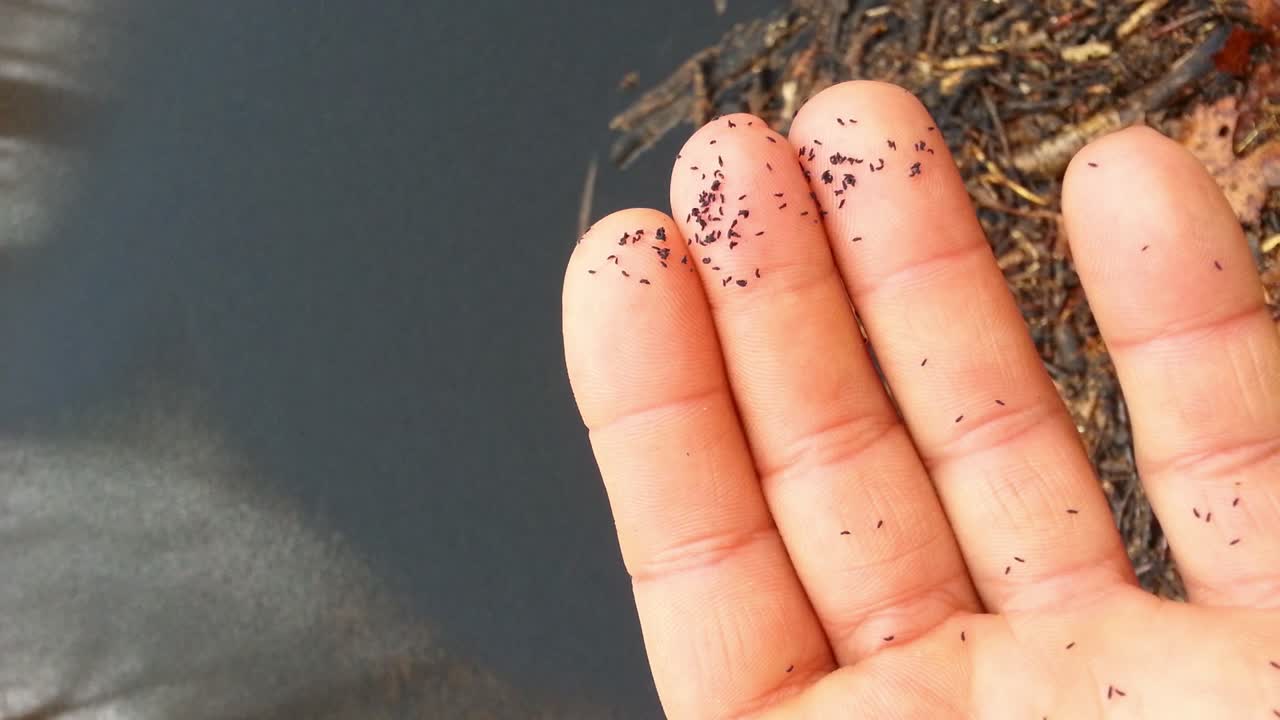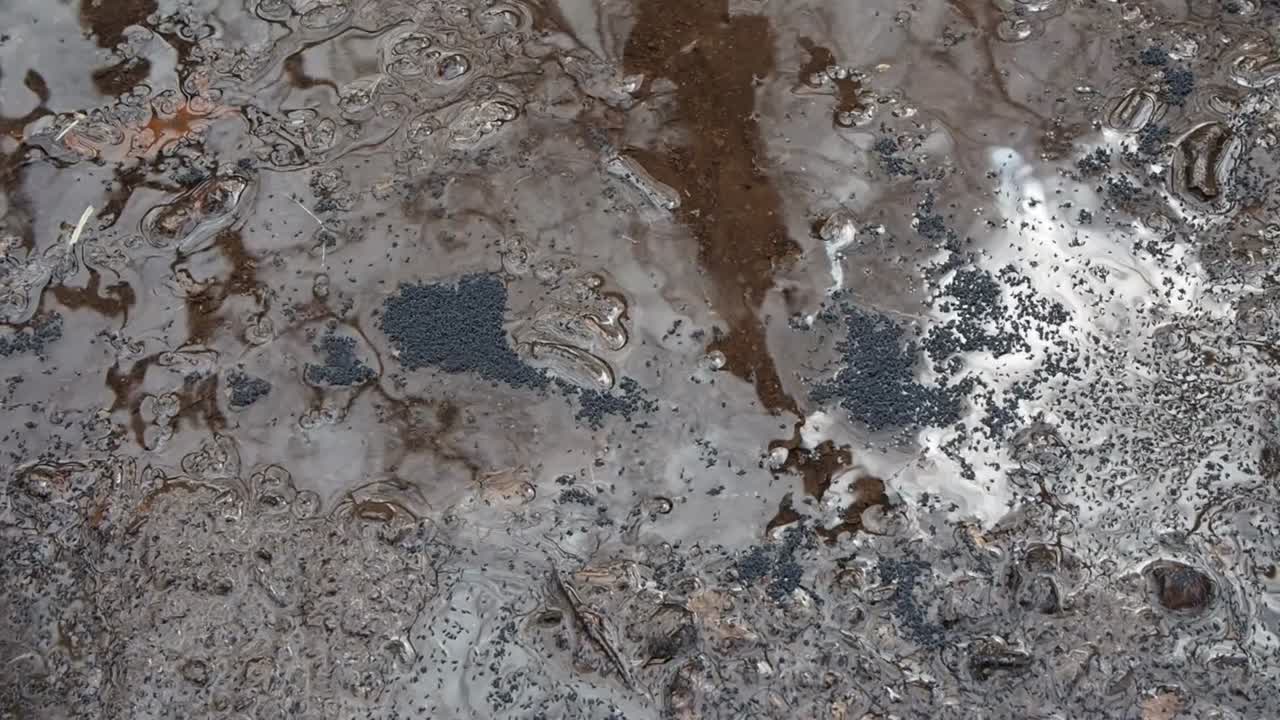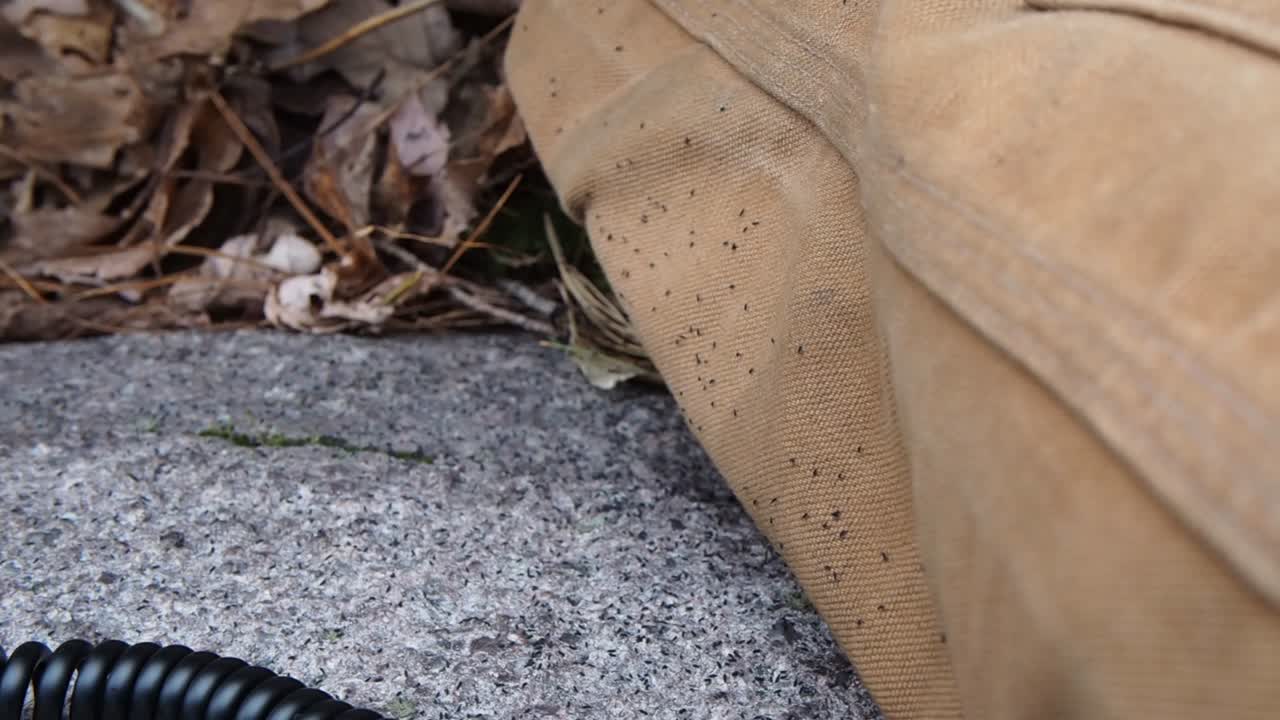A Finnish friend of mine asserts that black trumpet mushrooms (Craterellus cornucopioides, fantastically delicious) are a social construct. That is, you can only find them in the woods if you believe that they will be there, and further, that the number of mushrooms you find is directly proportional to the strength of your belief. In this way, finding a first black trumpet boosts your conviction and leads to others. In the best case, this becomes a positive feedback loop, and you come home weighed down with mushrooms. My friend would further claim that black trumpets only exist insofar as we believe in their existence, but then, Nordic darkness does funny things to the Finnish psyche…

Finnish metaphysics notwithstanding, I’ve found this approach to the natural world to be extremely revealing. I’m chastened by my ability to walk through a space and fail to notice something (many things!) until a more alert friend points it out to me. Then the thing — bird, flower, geologic formation — afterwards appears everywhere, and I wonder at my previous blindness. There’s a wonderful creature called a snow flea (most likely Hypogastrura tooliki) that epitomizes this phenomenon for me. They are most easily observed on warmish days toward the end of winter, when they congregate on the snow, often in animal tracks, looking for all the world like soot, or a dusting of black pepper.
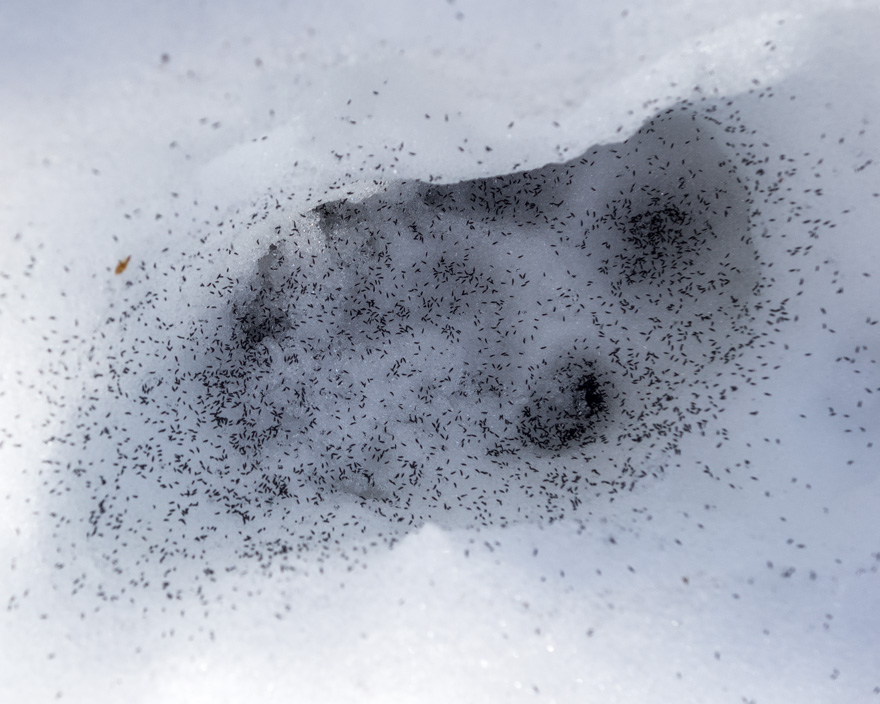
It’s supremely easy not to notice them at all, and even if you do, to dismiss them as a byproduct of the nearby interstate highway. But if something makes you pause to watch them for a moment, everything changes:
Suddenly dirt becomes life, and you wonder, “Where the hell did these guys come from? And why aren’t they frozen?” It turns out that these guys are neither fleas nor insects, but springtails from the order Collembola. They are incredibly abundant, though hard to spot, in forest soils, eating dead plant matter and other small critters and generally helping further the decay cycle. They have evolved to biosynthesize what amounts to antifreeze, which allows them to remain active in cold weather, but I’ve not heard any convincing explanations of why they gather on top of the snow in late winter.
I have a developed a great fondness for these unlikely little creatures that share the winter landscape with me. They’ve gone from invisible to blazingly obvious since a friend pointed them out to me, and I can’t help smiling as we encounter them on our winter runs. And that would have been the end of my story, but for my discovery last weekend (with Musti for scale):
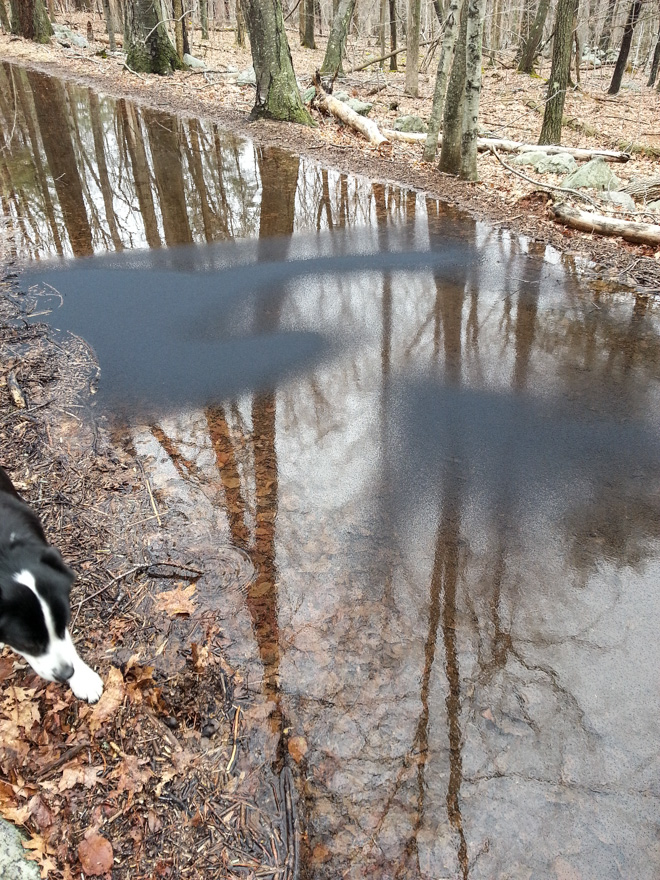
We were near the end of a run in the Chickatawbut section of the Blue Hills when I saw a flooded section of the trail ahead of me. At first I thought there were strange wind-driven ripples on the surface of the water, but as I got closer, it was clear there was something other than water on the surface. I dipped my fingers in to try to figure it out:
My winter friends had come back to visit me! I explored the area further, and found that the snow fleas were everywhere on the gently flowing water on the trail.
Still, the appearance felt somewhat parenthetical — it didn’t seem that the puddle-borne snow fleas were any more representative of normal springtail behavior and habitat than the ones filling snowy footprints.
Later that afternoon, I went back to the same section of woods, this time in search of wood frogs. I was sitting on a chunk of granite next to a vernal pool, waiting for the frogs to overcome their shyness, and I noticed something on my pant leg:
Now we were getting somewhere! For the first time, I was seeing my friends in what might be their normal state, hopping around on a rock and in the leaf litter (and the wood frogs were finally starting to vocalize). Each encounter with the snow fleas left me more open to the subsequent one, until I got a glimpse into their previously-invisible world. I don’t think I can be persuaded that I had any role in their appearance, but belief and expectation played a large role in my learning more of their story.
Finally, I found this wonderful video online that gives an alternate explanation for the existence of snow fleas…
